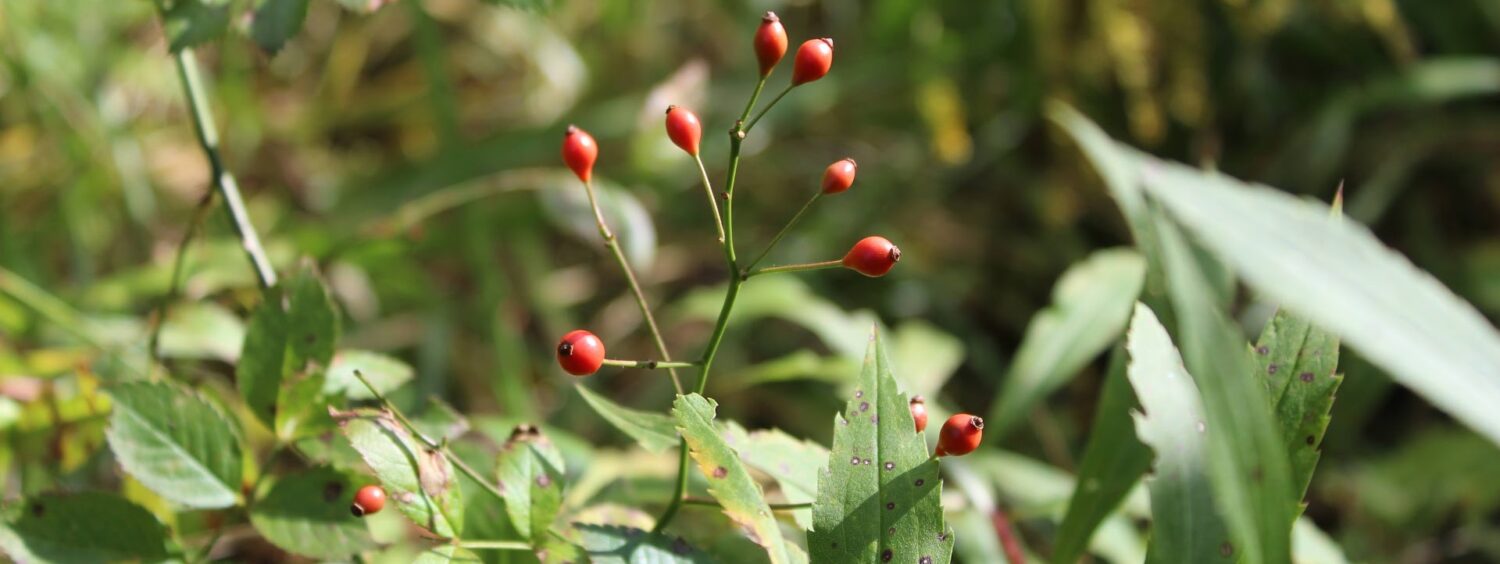For my final phenology post, I revisited Oak Knoll Wildlife Sanctuary in my hometown of Attleboro, Massachusetts. I visited this site back in November to observe the winter phenology of the area. Upon returning, I noticed a multitude of changes in the plants and wildlife.
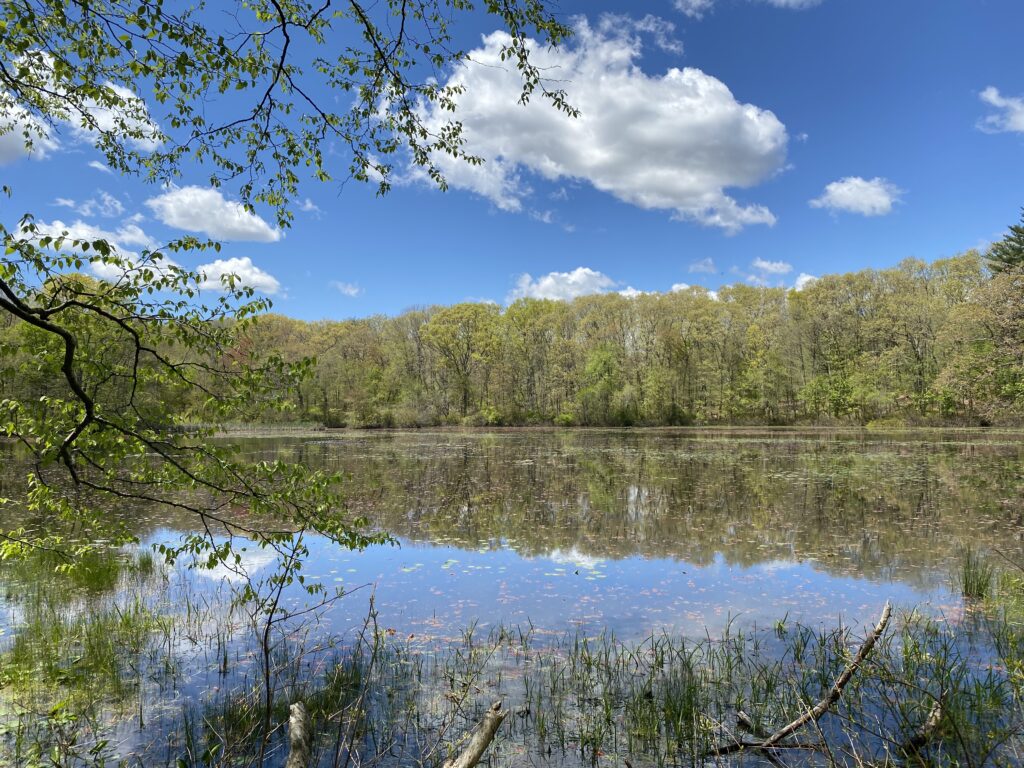
The ducks that inhabited Lake Talaquega in November have migrated North for the summer to breed, but spring marks the return of several migratory bird species from the south. Below is an audio clip of an indigo bunting followed by a red-winged blackbird.
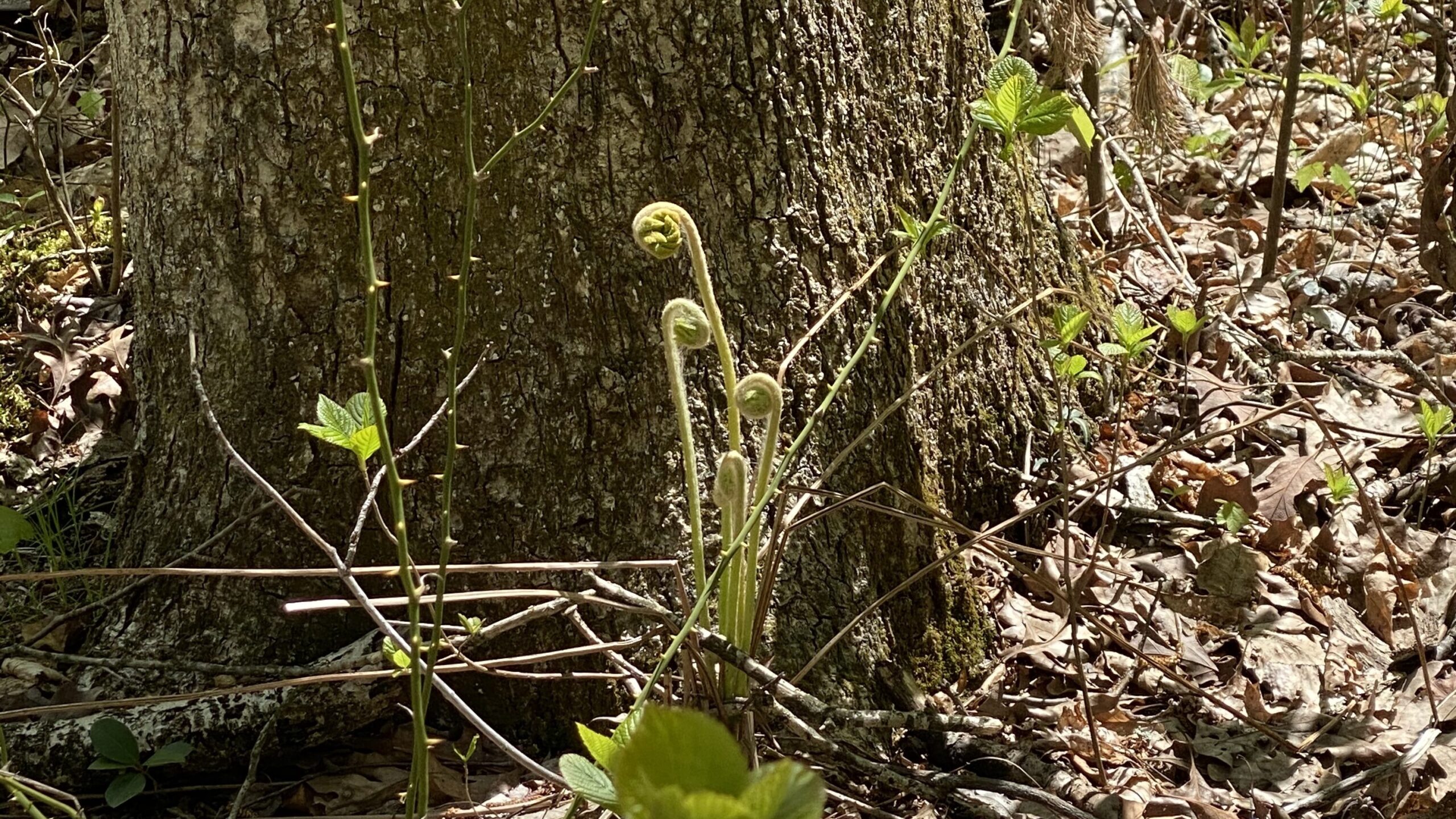
A striking similarity between the phenology of Burlington and Attleboro was the presence of Ostrich ferns. Ostrich ferns are a staple of the Intervale in Burlington, but they are often threatened due to the culinary potential of its fiddleheads. I was pleasantly surprised to see an abundance of these ferns reemerging at Oak Knoll.
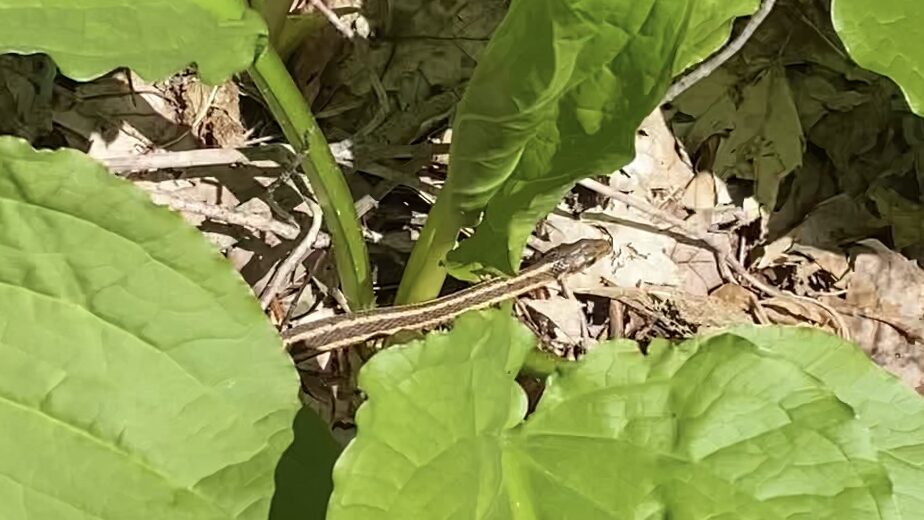
Pictured above is a garter snake slithering between huge skunk cabbage leaves. I saw a total of three garter snakes during my time at Oak Knoll. These creatures reemerge from hibernation around April and can often be seen basking in the sun to raise body temperature through the Spring and Summer.
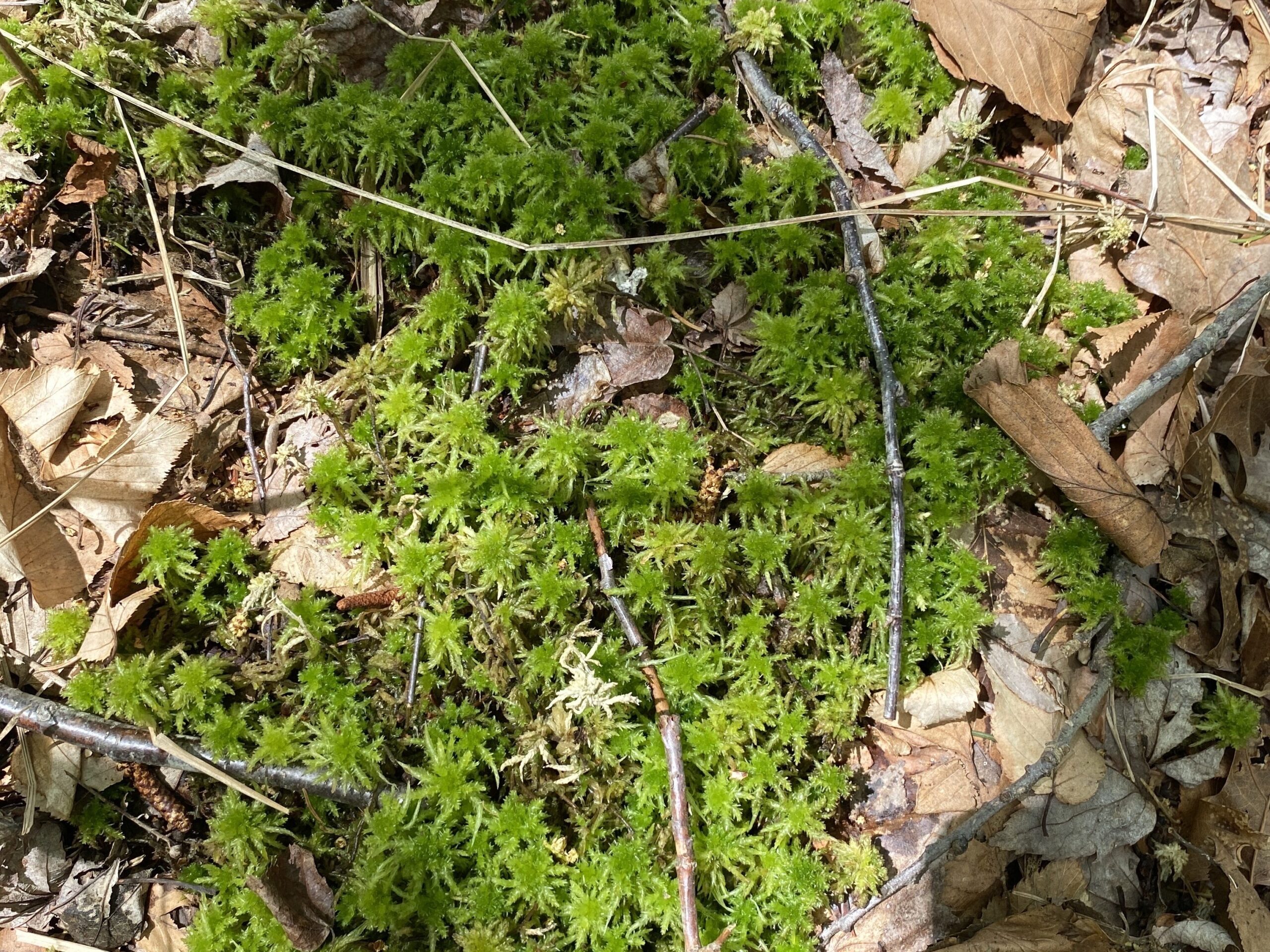
I encountered sphagnum moss adjacent to a wetland. This type of moss is commonly found in the spring and will gradually form peat. This moss lowers pH and enhances soils.
Centennial Woods, my typical phenology spot, serves as an intersection between nature, culture, and education. The forest’s location on the UVM campus makes Centennial Woods a premier location for college students and Burlington residents to learn about and reconnect with the more than human world. Centennial Woods has both rich biodiversity and rich history. The Abenaki people are the original inhabitants of Vermont and the UVM archaeology department has found Abenaki tool-making materials in Centennial, indicating that they have been present in this specific location for thousands of years. The land-use history of Centennial Woods has undergone quite the evolution, as stone walls used during Vermont’s sheep era are still present and an abandoned barrack signals past activity of the UVM ROTC.
I believe that Centennial embodies a socioecological system, and I would not consider myself separate from this natural complex. I have been present to observe the changes taking place for about nine months. I have interacted with countless species of flora and fauna and formed an intimate connection with my spot on the bending stream. I am grateful for the opportunity to have explored Centennial to further my understanding of the natural world and the roles that humans play within it.
